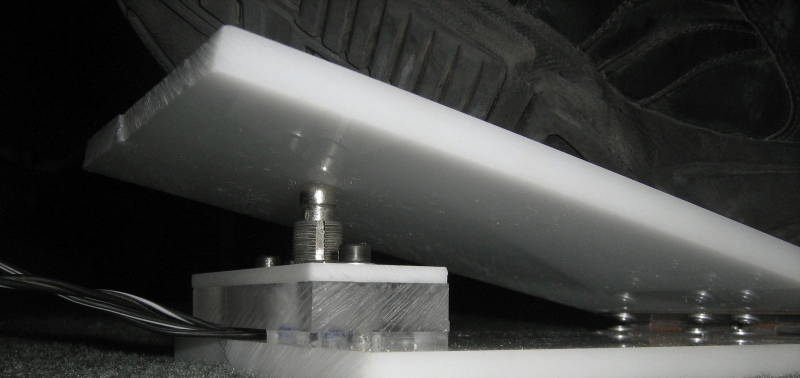Using the Toner-Transfer and Etch method for making prototype circuit boards is fairly common. One downside to this process is that any holes still need to be drilled. [Giorgos] hand drills boards all the time. He has a Dremel with a drill press attachment but he still prefers using a small pen-style mini drill to make the holes. There is one problem with this tool though, the on/off switch is in an non-ergonomic location. After flipping the switch tens of times during a drill job, [Giorgos] has felt some digit discomfort. He knew there had to be a better way.
His solution: a foot pedal on/off switch. This isn’t some off-the-shelf foot switch, [Giorgos] made it from parts and pieces kicking around in one of his junk drawers. The foot pedal frame is made from acrylic sheet. A couple of hinges allow the pedal to press down on an old switch, very similar to the ones found in guitar effect pedals. This switch was heavy-duty and had a strong spring that easily pops the switch and pedal back up after being pressed.
Wiring was easy, the positive lead of the DC wall wart was split and attached to the pedal’s switch. Pressing the switch makes or breaks the power connection, turning the hand-held drill on and off. [Griorgos] solve his ergonomic problem and cleaned out his junk drawer without spending a dime. We’d say that’s a triple win!
















why didn’t he just leave the drill on the whole time?
because it’s hand-held and he find it easier to position the drill when it’s off.
maybe that could have made it into the article.
I just leave the dremel drill running. but then I rarely do any through hole anymore, the only hole I drill anymore is for Via’s.
When it only costs ~$18AUD for 10 PCBs delivered, why bother?
I like the design though. Nice and simple.
you can iterate through designs extremely fast
Because if you only need one small board it’s a waste of time, materials, and money to buy 10 from half a world away.
Print/expose, etch, drill, done – 1 hour and $3, instead of 1 month and $15.
What is it about a project that interests HaD writers? anyone found a pattern?
They like contests, things that shoot, anything CD related, and things you can step on.
Click on the advertisements like you’re supposed to and don’t ask questions.
lol
I think this would be way more useful for controlling a solenoid valve for a vacuum pickup setup.
When both hands are full, a foot anything is very useful.
The switch should be angled to meet the pedal square. It will wear faster and put a groove in the pedal getting sticky eventually.
Switching the DC motor off to a short will cause it to stop quicker, letting safety and handling prevail.
Nice! I picked up a foot pedal off of a “Band Hero” drum kit from a charity shop. At one point almost every shop I visited had either complete drum kits or bits and pieces like the foot pedal. Anyhow, it looks pretty sturdy and works well. It’s not a proportional pedal, though; it’s simply an on/off switch.
“SPECIFICALLY MADE FOR PCB DRILLING”
It could be used for anything really.. It’s a stomp switch mounted into a holder for.. *gasp* stomping on. Though it is good to know stomp switches exist for when projects call for them.
I had hoped for a solution to *plunge* the drill with a foot switch.
I drill boards for electronic circuits on a mini drill press. When I do that I just run the press for the duration too. I’ve used a hand held rotary tool for drilling in the past. It is not for me. I do have a variable speed foot switch for my Foredom Flex shaft tool though. It is like a gas pedal. It’s pretty cool I guess.